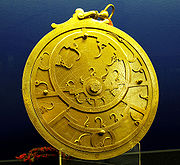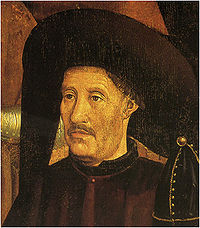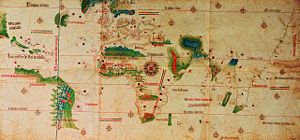Since the origins, Silves was always linked to the waters of the Arade river and connected to the sea.
The first occupation signs of the place is available from the prehistoric times were in and around Silves menhirs and articles witnessing intensive agriculture and exploitation of copper; the settlement and people camps were on the banks of the Arade River, as the witness traces in Rosário Island 1 km away to west from de club.
Cilpes may be the first name in the root of the current designation of the city, probably originating from the first trading post established 2 km from the city – the area where it is established the Nautic Club – and trade relations with all peoples of the Mediterranean, Phoenicians, Greeks, Carthaginians, Romans and Arabs flowing the timeline.
The earliest documented event that is known about Silves is the poet and diplomat Yahya Ghazali boarding to the land of Madjus, the peoples of northern Europe, as ambassador of Rahman II.

Astrolabe
It was the Muslim conquest and the long cultural presence here that has kept the VIII century to XIII which deeply marked the history and culture of the region and the city, strengthening the name Xilb or Xelb between the arab world and particularly in the east, it was called the Baghdad of the west on XI century, with the poetry and Sufism philosophy. In this golden age we’ve received profound teachings of mathematics and algebra, bio-geography, astronomy, geography, cartography, agriculture, navigation, pollution and waste management, aviation, geology, mineralogy and paleontology, meteorology, grammar, poetry, oratory, we bequeathed several features that encouraged us to discover other new worlds.
It was here at the Silves International Nautical Club which they anchored the ships of the crusaders who participated in the takeover of the city, bringing the royalty of Europe in what has been the largest european alliance to date, participated in Silves assault with Sancho I, king of Portugal, the year 1189: Frederick, Purple Barbarossa of Germany, Philip Augustus of France and Richard the Lionheart of England.

Henry the Navigator
Years of Four Hundred, early Five Hundred, between XV and XVI century, Silves enjoy some prosperity derived from the movement of the river and its being the capital of the bishopric, as well as here to be one of the epicenter of time of the Portuguese Discoveries. It left many people from Silves serving caravelles of D. Henry, Lord and manager of Silves goods, is an example of such participation the navigator Diogo from Silves, probable discoverer of the Azores islands, D. Rodrigo II, bishop of Silves, armed with your account of the ships of the expedition of 1447 which came to be lost in the shallows of Guinea, or participation in the conquest and defense of the Portuguese cities of North Africa, the Chronicle of the Conquest of Ceuta by Gomes Eanes de Zurara here was completed in 1450.

Cantino Planisphere
Open to universality and knowledge about the art of navigation, the Silves International Nautical Club is proud to have its headquarters on land with such deep traditions and wants to transmit to future generations this legacy of openness, universality, knowledge sharing, peace, understanding and acceptance of people of other places and cultures.
Welcome to the Silves International Nautic Club.


Leave a comment